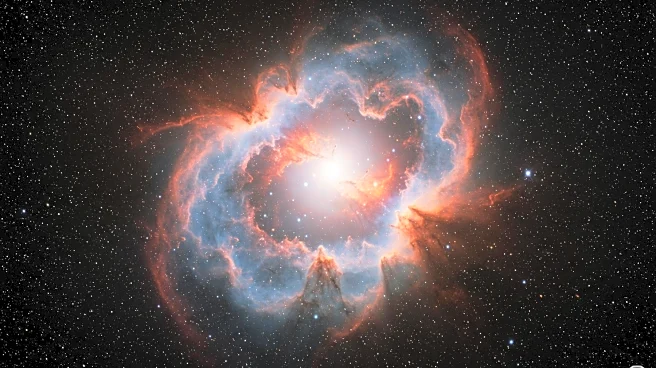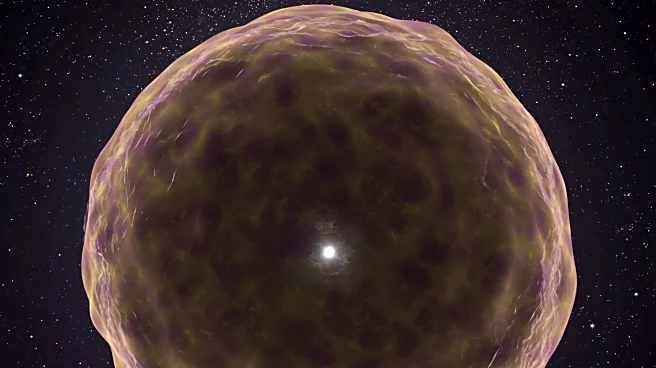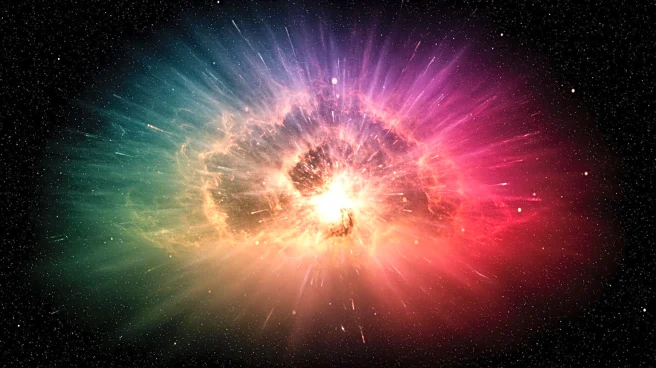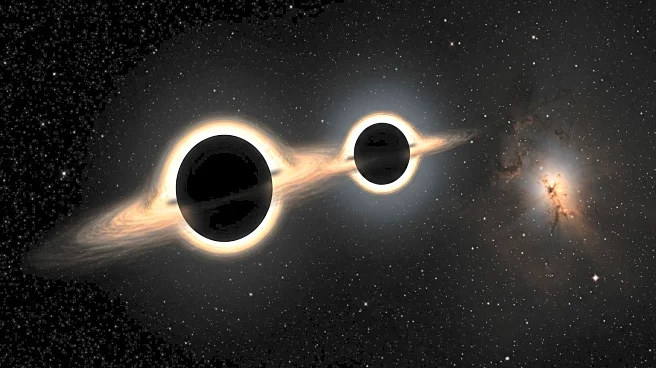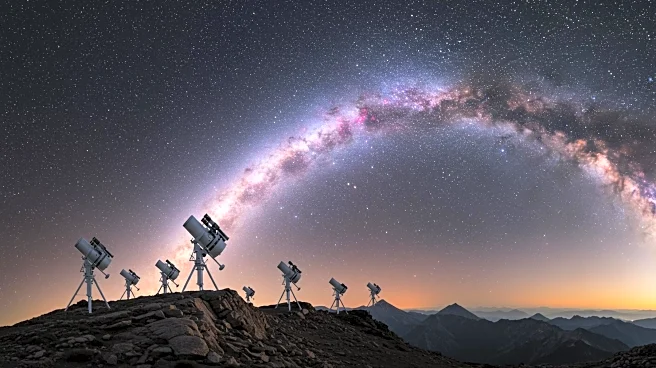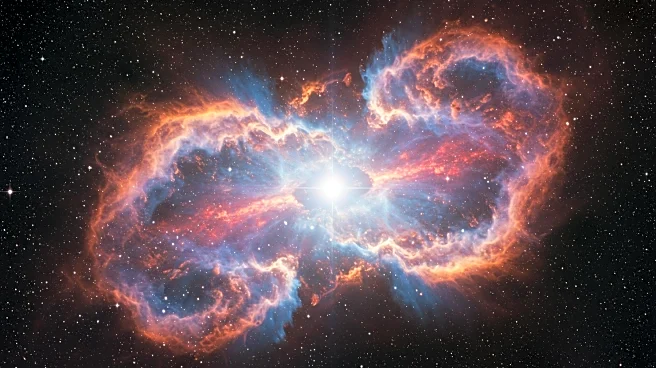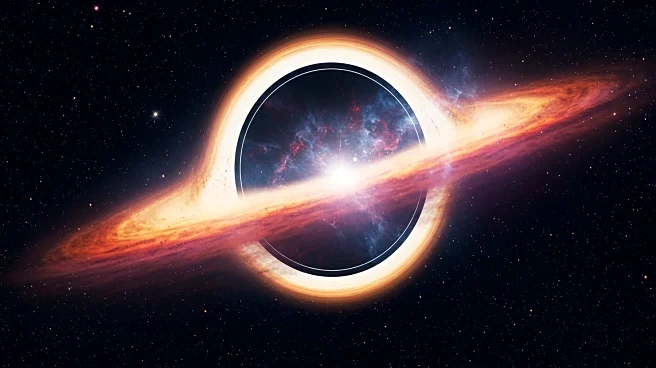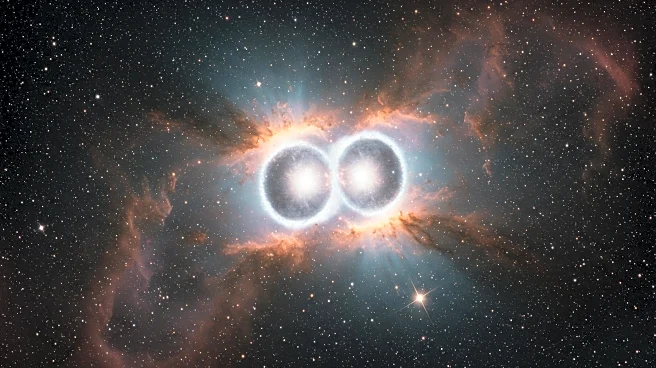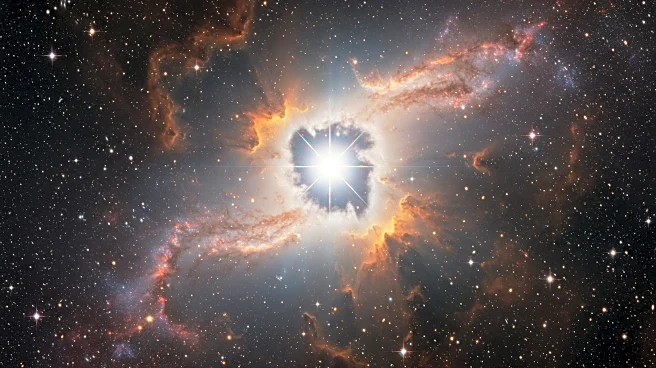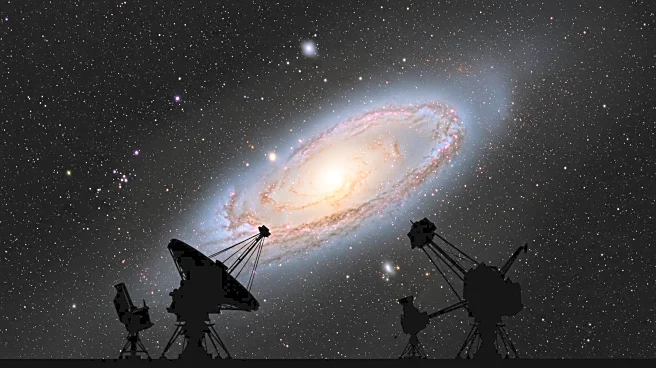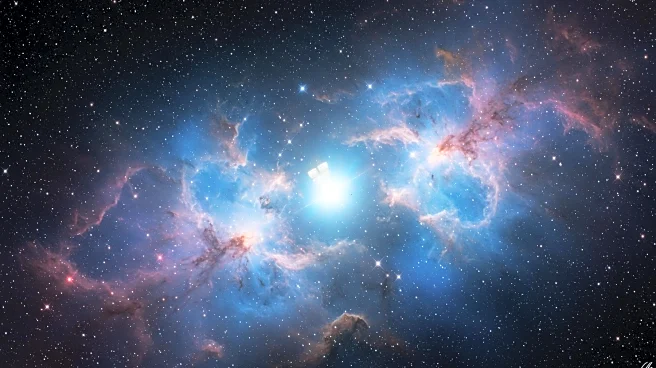What's Happening?
Scientists have tracked the transformation of the planetary nebula IC418 over 130 years, revealing rapid heating of its central star. The research, published in The Astrophysical Journal Letters, shows the nebula's green light has intensified due to the star's temperature increase by 3,000°C since 1893. This rapid change challenges existing theories on stellar aging and carbon production. The study utilized historical observations and modern technology to measure the star's heating rate, offering insights into the evolution of planetary nebulae.
Why It's Important?
This research provides unprecedented evidence of rapid stellar evolution, prompting a reevaluation of current models of star life cycles. Understanding the processes that lead to the formation of planetary nebulae is crucial for comprehending the lifecycle of stars and the production of elements essential for life. The findings may influence theories on the masses of stars capable of producing carbon, impacting our understanding of cosmic evolution and the conditions necessary for life.
What's Next?
The study's results may lead to revisions in stellar evolution models, particularly concerning the speed of changes in planetary nebulae. Researchers will continue to analyze historical data and compare it with modern observations to refine their understanding of stellar transformations. This ongoing research could provide further insights into the mechanisms driving rapid changes in stars and their implications for cosmic evolution.
